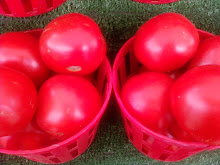


Deeg Palace
Deeg (Lat 27°25' 77°15' Long) located in Bharatpur district, Rajasthan is historically associated as the eighteenth century strong hold of the Jat rulers. Badan Singh ( 1722 – 56 AD) after assuming the throne consolidated the headship of the tribe and thereby became the virtual founder of the Jat house at Bharatpur. The credit of commencing the urbanization of Deeg also goes to him. It was he who selected this spot as the headquarters of his newly established Jat kingdom.The strong citadel with towering walls and bastions was erected slightly later in 1730 AD by Surajmal, the worthy son of Badansingh. About the same period according to certain writers the large charming tank called Rup Sagar was built by Rup Singh, the brother of Badan Singh. The beautiful garden retreat adorning this city is the most outstanding of the artistic accomplishments of Surajmal and serves to this day a glorious memorial to the celebrated hero of the Jat tribe. After the death of Surajmal, his son Jawahar Singh (1764 – 68 AD) completed certain palaces including the Suraj Bhawan and gave finishing touch to the gardens and fountains.The architecture of Deeg is mainly represented by the mansions called the Bhawans popularly known as Gopal Bhawan, Suraj Bhawan, Kishan Bhawan, Nand Bhawan, Keshav Bhawan, Hardev Bhawan. The striking features of these palaces are balanced outlines, fine proportions, commodious halls, attractive and logically disposed arcades, alluring greenery, charming tanks and canals with fountains. The layout of Deeg gardens is based on formality of the Mughal Char bagh or four fold garden patterns and flanked by two reservoirs called namely Rup Sagar and Gopal Sagar. The architecture is primarily of trabeate order, but the use of arcuate system has also been made in certain instances. Mostly the arcades are of a decorative quality as each arch is formed by joining spandrel shaped slab cantivelers projecting from the pillars. The general features of this style are engrailed arches resting on ornate pillars, hypostylar halls flat roof terraces, balconies and pavilions with Bengal roofs, double eaves, moderate structural heights and spacious internal arrangements.
Deeg (Lat. 27º 28' N; Long. 77º 20' E), ancient Dirghapura in district Bharatpur became a stronghold of the Jat rulers during 18th -19th cent AD. It is located at a distance of 153 km from Delhi and 98 km from Agra. It falls within the territorial limits of the ancient holy Braj - Bhumi. Historically, Deeg is associated with the raise of the Jat peasants under the leadership of Rajaram (AD 1686-88), Bhajja Singh (AD 1688-98) and Chudaman (AD 1695-1721). After the death of Chudaman, Badansingh (AD 1722-56) consolidated his authority over several districts and became the virtual founder of the Jat rule at Bharatpur. He is credited with transforming Deeg into a flourishing town with beautiful buildings, palaces and gardens. Surajmal (AD 1756-63), the son and successor of Badansingh was the greatest ruler and during his rule the power of clan reached its zenith.











